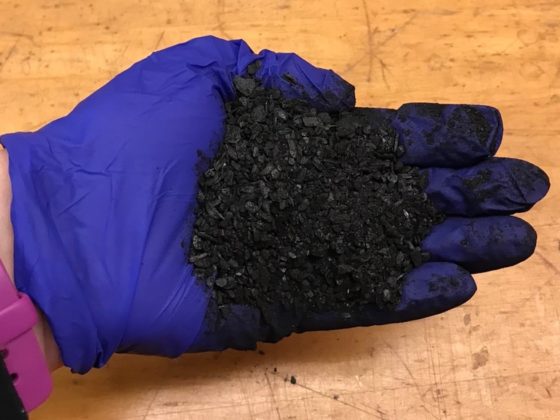Professor Geoff Geise is a chemical engineer at the University of Virginia and an expert on the membranes that are commonly used in reverse osmosis, a leading technology in seawater desalination. Geise recently contributed the article “Desalination: Water for an Increasingly Thirsty World” to the Water in Europe and the World special issue of Europe Now, which also featured the Global Water Initiative and some of our colleagues. We spoke with him.
What is desalination and what are the different ways of desalinating water?
Simply put, desalination is the separation of water and salts. It is an increasingly popular way to produce water for drinking or other uses from saline water (such as seawater) that would be too salty otherwise.
There are two primary approaches to desalinating water. One method is to boil the water off and then condense the purified water. This process, sometimes called distillation, works because water will boil and vaporize whereas salt does not. Therefore, the water leaves the solution as a gas and the salt is left behind. Distillation in this manner has been used to desalinate water for some time, but it is relatively energy intensive because it takes significant energy to cause water to boil.
The other approach is to use a selective barrier that allows only for the transport of salt or water (but, ideally, not both). Membranes (or filters) are an example of this type of desalination strategy. The idea is to do the separation by preferential removal of either water or salt from the solution by forcing it through the membrane. In both strategies, the end product is purified water and a concentrated brine.
You say that the energy intensity of desalination is a critical factor that will determine the extent to which desalination will be adopted. What are ways to reduce the energy use of desalination? How realistic is it to think that the energy challenges of desalination could be solved just by merging this technology with renewable energy?
The physical laws of nature require a certain minimum amount of energy to separate molecules. A loose analogy is that one needs to put in a certain amount of energy to sort out a messy room—if no energy is put in, the room stays messy (or the items in the room stay mixed). Likewise, to get water and salt to de-mix, we need to put in energy, and that adds to the cost of desalination (and of the resulting product, water). Desalination of seawater is relatively efficient today (relative to this minimum amount of energy that is needed), but because seawater is very salty, the minimum amount of energy required to do the separation is higher, which generally makes it more expensive. Material and process improvements will continue to make desalination more economical (and reduce the overall energy burden of the process), and the availability of renewable energy could also help to reduce the carbon footprint of desalination. Desalination, however, will never be “free” from an energy perspective. I think the incorporation of renewable energy and desalination is promising, and while some strategies might be closer to implementation (i.e., using renewable electricity on the grid for desalination), other more integrated approaches likely will need more engineering and optimization to become viable.
What are point-of-use desalination systems? Where do you see their applicability?
The most common type of point-of-use system would be one that is used in the home. Centralized infrastructure for water treatment is expensive. This is why it is not in place or is not viable in some parts of the developing world now or in the near future. In some of these cases, consumers are turning toward point-of-use systems where the end user ultimately manages and controls the water purification process. Compared to industrial desalination, these point-of-use systems are small (perhaps only intended to supply a family or two with drinking water). They are particularly valuable in situations where large-scale utility infrastructure is not available and/or feasible.
What is the specific focus of your research on desalination, and how could it help the adoption of desalination technology?
We are specifically engineering membranes that resist chemical degradation in the presence of oxidizing agents such as chlorine. These chemicals are widely used to prevent biofouling in water treatment systems, which is a critical and expensive problem facing water purification. However, a side effect of their use is that they degrade the current state-of-the-art desalination membranes. We have been working on chlorine-stable chemistry that is promising for advanced desalination membranes, but the separation efficiency of these membranes has not yet reached that of the commercial state of the art. To be viable, our membrane will need to desalinate water as efficiently as the current state of the art while also being more chemically stable. The core of this research is understanding the molecular-level processes and phenomena that govern the selectivity of the material (or in other words, to what extent we can pass water through the membrane while leaving all the salt behind). To do this, we leverage intermolecular interactions that can be controlled by placing specific chemical functionality (special molecules) on the membrane material itself. Controlling the composition and position of these special molecules within the membrane material will allow us to engineer water and salt transport selectivity and prepare advanced membrane materials for next-generation desalination processes.





